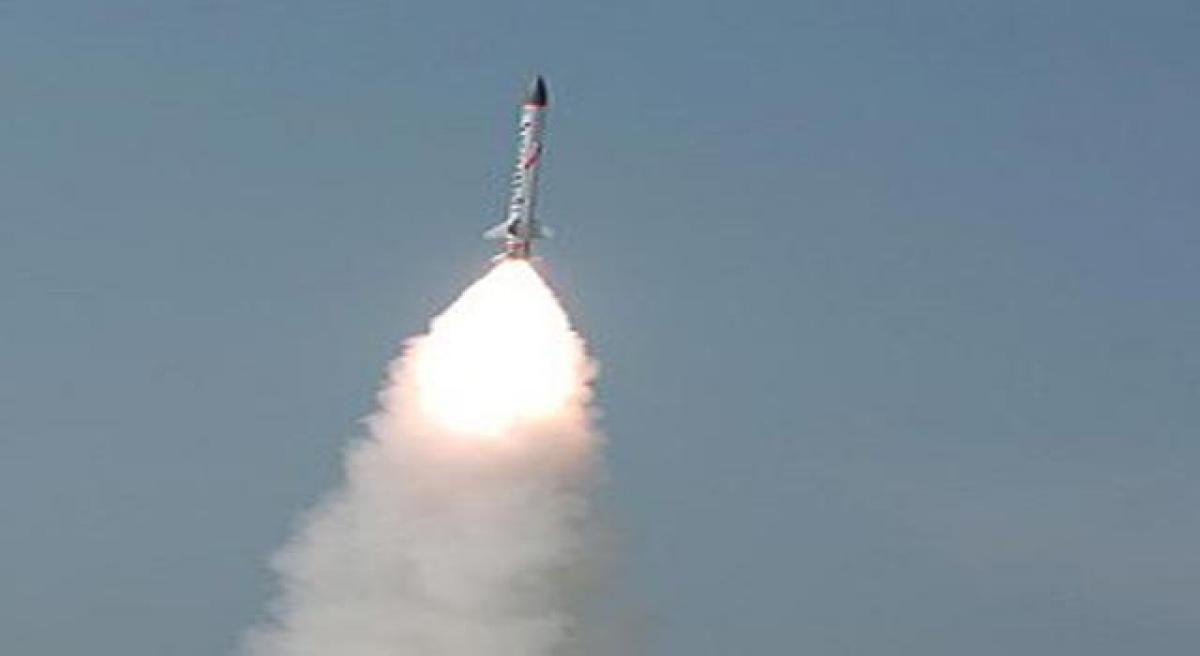Live
- Gold rates in Delhi today surged, check the rates on 15 November, 2024
- Collector Prasanthi emphasises transparency in sand supply
- Don’t be fooled by brokers, MLA advises farmers
- Gold rates in Visakhapatnam today surges, check the rates on 15 November, 2024
- Tirupati: Student commits suicide
- Lenovo launches high-end tablet K11
- Tirupati: Two women die in accident
- Vaishnaoi launches new realty project
- Strive to bag national level Swachh Survekshan award
- India set to pip Japan as world’s 4th largest GDP
Just In

India on Wednesday successfully test fired the Advanced Air Defence (AAD) Missile, the second level of two-tier interceptor missile system that can destroy hostile ballistic missiles.
India on Wednesday successfully test fired the Advanced Air Defence (AAD) Missile, the second level of two-tier interceptor missile system that can destroy hostile ballistic missiles. The latest test comes less than a month after India successfully tested the Prithvi Defence Vehicle (PDV) interceptor missile on February 11. DRDO conducted the successful launch of the interceptor missile at 1015 hrs on Wednesday from Abdul Kalam Island, Odisha.
The endo-atmospheric missile, capable of intercepting incoming targets at an altitude of 15 to 25 km successfully destroyed the incoming missile. All the mission objectives were successfully met. The weapon system radars tracked the target and provided the initial guidance to the interceptor which could precisely home on to the target and destroyed it in endo-atmospheric layer.
The complete event including the engagement and destruction was tracked by a number of electro-optical tracking systems using infrared imagery. Radars and telemetry stations tracked the target and the interceptor till the destruction of the target. The launch has proved the Ballistic Missile Defence (BMD) prowess of the country.
Missile defense systems are a type of missile defense intended to shield a country against incoming missiles, such as intercontinental ballistic missile (ICBMs) or other ballistic missiles. The United States, Russia, France, India and Israel have all developed missile defense systems The term "Missile defense system" broadly means a system that provides any defense against any missile type (conventional or nuclear) by any country.
However, missile defense is no longer limited to interception of strategic nuclear weapons. The gradual development and proliferation of missile technology has blurred the line between the technologies for the interception of tactical missiles (usually short to intermediate range with non-nuclear payloads) and the interception of strategic missiles (usually long ranged with nuclear payloads).
High-performance tactical ballistic missiles carrying non-nuclear payloads now have the ability to affect strategic balance in conflict zones. Likewise, high-performance tactical missile defense systems can now influence force deployment strategies. India's air defence network has two principal components - the ‘Air Defence Ground Environment System’ (ADGES) and the ‘Base Air Defence Zones’ (BADZ).
The ADGES network provides for wide area radar coverage and permits the detection and interception of most aerial incursions into Indian airspace. The BADZ system is far more concentrated with radars, interceptors, SAMs and AAA units working in conjunction to provide an intense and highly effective defensive barrier to attacks on vital targets.
Introduced in light of the ballistic missile threat from Pakistan,[7] it is a double-tiered system consisting of two interceptor missiles, namely the Prithvi Air Defence (PAD) missile for high-altitude interception, and the Advanced Air Defence (AAD) Missile for lower altitude interception. The two-tiered shield should be able to intercept any incoming missile launched 5,000 kilometers away. PAD was tested in November 2006, followed by AAD in December 2007.

© 2024 Hyderabad Media House Limited/The Hans India. All rights reserved. Powered by hocalwire.com







